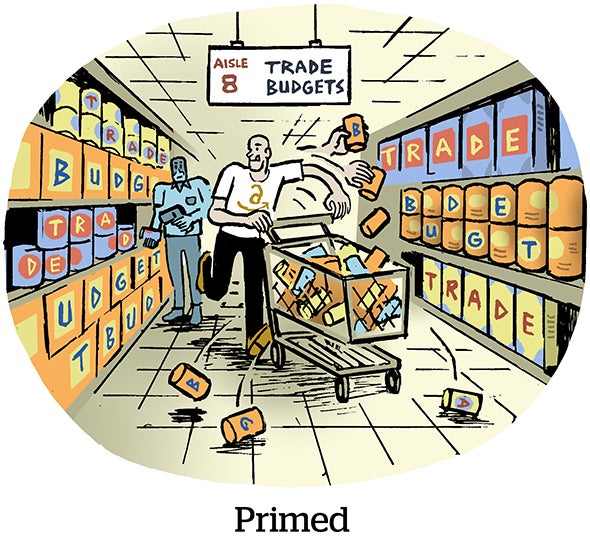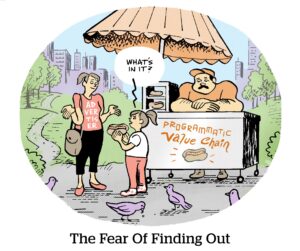Amazon Prime Day was a smash hit this year in terms of sales volume.
In total, 375 million items were shipped with Prime Day deals, with Tuesday and Wednesday as Amazon’s two biggest shopping days ever. Now it comes down to proving it worked.
Even while the total sales volumes were staggering, sellers made huge concessions on profit margins to capitalize on this year’s sales. They also experimented with expensive social and streaming video investments that must be reconciled with the cost of direct response ads, promotional discounts and inevitable returns.
During the 48-hour Prime Day period, sellers spent an average of 14% of revenue on Amazon ads, according to Momentum Commerce CEO John Shea, based on the aggregated results of the ecommerce analytics company’s customer base (including Theragun and Hey Dude, two brands called out by Amazon in its post-Prime Day press release for their sales marks).
Different verticals or companies have very different ratios of ad spend to total sales revenue, but Shea said the 14% average is about double the typical rate, and up from 9% on Prime Day last year. And, on top of that, there was “stronger discounting and more deals than last year.”
Now, many brands are digging into the data to discover whether perhaps the biggest sales day they ever had was, in fact, a success.
You’ll need a massage after this
Therabody, the maker of handheld deep tissue massager Theragun, could be the prime case study (har har).
The product got a rare call-out from Amazon – even rarer considering Therabody is a large third-party seller, and Amazon usually shouts brands like Apple that have first-party wholesale deals directly with Amazon, or small independent-owned brands that count toward SMB sales.
But Therabody bet big on Prime Day.
The company worked with Momentum Commerce, its media agency PMG and the Amazon Ads team. There was also an Amazon-based streaming campaign in the weeks leading up to Prime Day, CMO John Solomon told AdExchanger.
The brand also kept its price high for a month leading up to Prime Day, enforcing an undiscounted rate across its own site, properties and other retailers that carry its products so the Prime discount would have its full impact.
While it was maintaining its relatively high price point a month out, Therabody’s streaming campaign helped elevate brand awareness, he said. That streaming campaign fed the direct response advertising by creating a pool of retargetable audience on Prime Day (only if you use the Amazon DSP, though).
Therabody also had an Amazon Live engagement, Amazon’s QVC-like streaming service, the night before Prime Day, and again viewers of the livestream could be retargeted on Prime Day.
Solomon said Therabody had some confidence leading into Prime Day that the streaming video investments would drive brand awareness and improve conversion rates for performance marketing (the search and sponsored product listings) on the day of. Last year, he said the company worked with Amazon and its media vendors to run a Thursday Night Football campaign and test the sales attribution on the retail marketplace.
Margin management
Amazon knows Prime Day brands are straining their profit margins to participate. The retail platform is subsidizing some of those costs, especially some of the pricier investments to drive traffic, like Google search or social influencer marketing, footing the bill for TikTok influencer marketing for some close partner brands, Shea said.
He also said brands this year were much more aggressive in pursuing Amazon’s brand referral bonus.
To incentivize traffic to Amazon product pages, sellers can sign up to the brand referral program and get 10% of the purchase price credited back if they drive traffic, like via a Google search or from an influencer’s affiliate link.
The brand referral deal “has gotten more clients comfortable sending offsite traffic to Amazon,” Shea said.
The brand referral program may not last forever. (Amazon used to have a generous third-party affiliate program that had similar cash-back incentives, which it scrapped in 2020.)
But there are sustainable strategies for managing profit margins while conceding to Amazon on price cuts and ad increases.
A popular tactic this year was to offer a super-steep discount on one item to stand out in the Prime Day deluge, which gives the brand a chance to push its full-price catalogue.
Behind the discounts and sales revenue, Prime Day is a B2B bonanza, just as much as a consumer event.
“Amazon very effectively uses these events to engage with brands,” Shea said, “to get them to adopt pieces of the cloud and ad offerings that they haven’t before to prove that those work.”
















